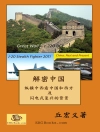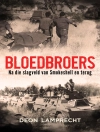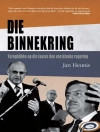Ohio: A History of the Buckeye State explores the breadth
of Ohio’s past, tracing the course of history from its
earliest geological periods to the present day in an accessible,
single-volume format.
* Features the most up-to-date research on Ohio, drawing on
material in the disciplines of history, archaeology, and political
science
* Includes thematic chapters focusing on major social, economic,
and political trends
* Amply illustrated with maps, drawings, and photographs
Receipient of the Ohio Geneological Society’s Henry Howe
Award in 2014
Tabela de Conteúdo
List of Figures viii
Acknowledgments xii
1 Ohio Before Ohio: State Geology and Topography 1
Geology 2
Topography 7
Importance of Ohio Geology and Topography 13
2 The First Ohioans: Prehistoric Ohio 20
Paleo-Indian Period (c. ?-c. 11, 000 years ago) 22
The Archaic Period (c. 11, 000-c. 2, 800 years ago) 24
The Woodland Period (c. 3, 000-c. 1, 000 years ago) 29
Late Prehistoric Period (c. 1, 100-c. 400 years ago) 42
3 The Middle Ground: European and Native American
Interaction in Ohio 47
Early Effects of European Contact 49
Ohio as ‘The Middle Ground’ 52
Colonial Wars and Life in Middle Ground Ohio 54
4 War and Peace: The End of ‘Middle Ground’ Ohio 67
The Resistance of 1763 68
Lord Dunmore’s War 75
The American Revolution 79
The Western Confederacy and the End of the Middle Ground 87
5 The Ohio Experiment: Formation of the Northwest Territory,
Early American Settlements, and Statehood 100
Clearing Title and Related Problems 101
Organizing Ohio and the Birth of the Public Land System 102
Early Ohio Settlements 113
From Territory to State 117
6 A Community of Communities: Early Ohio Society 125
Demographics 126
Social Conflict 138
Reform 141
7 Revolutions: Early Ohio Economic Developments 160
Early Ohio’s Economy 161
Economic Revolutions 166
8 From Periphery to Center: Early Statehood and National Politics 185
Early Statehood Politics 186
The War of 1812 192
State and National Politics, 1815-36 200
Political Ascendance and its Problems 206
Sectional Politics and the End of the Second Party System 208
The Constitution of 1851 210
9 Ohio Must Lead! The Civil War and Reconstruction 214
Ohio and Sectional Conflict 216
Ohio and the Civil War 222
Ohio’s Civil War Contribution: A Summary 234
The Reconstruction Period, 1865-77 240
10 Why Ohio? Late Nineteenth-Century Politics and Presidents 247
Why Ohio? 247
State Politics 249
Ohio’s Presidents from Hayes to Mc Kinley 256
11 The Making of an Industrial State: 1865-1920 280
Industrialization 281
Location and Transportation 283
Natural Resources 287
Finances, Entrepreneurs, and Innovation 288
People 294
Industrial Work and the Rise of Organized Labor 307
12 Urban Life, Leisure, and Political Activism: 1880-1920 316
Urban Life and Leisure 317
Urban Political Reform 324
Women’s Activism 331
Education 336
Conclusion 338
13 Reform and the Great War: 1912-1920 340
The 1912 State Constitution 341
The 1912 Elections 343
The Flood of 1913 347
Ohio and the Great War 349
The 1920 Election 358
Summary 359
14 Boom, Bust and War: 1920-1945 361
The Economy and Politics in the 1920s 363
Social and Cultural Conflict 366
Literary Critics of Ohio 370
The Great Depression and the New Deal 376
World War II 387
At War’s End 393
15 Affluence and Anticommunism 396
The Postwar Boom 397
Migration and the Changing Cities 404
The Cold War and Ohio Politics 411
Conclusion 424
16 Rebellion and Reaction: The 1960s 426
The Struggle for Black Equality 427
Carl and Louis Stokes 434
Resurgence of Women’s Activism 436
Emerging Environmental Issues 440
Escalation: Vietnam and Politics 444
Campus Unrest and the Kent State Shootings 451
17 Ohio since 1970 457
Stagnation and Decline 458
Politics in the 1970s and 1980s 467
Towards the Future: Ohio since the 1990s 476
Summing Up: Ohio as America 485
Index 490
Sobre o autor
Kevin F. Kern is Associate Professor of History at the
University of Akron. He is currently completing a history of the
Galton Society, an early 20th-century U.S. eugenics
organization.
Gregory S. Wilson is Associate Professor of History at
the University of Akron. He is the author of Communities Left
Behind: The Area Redevelopment Administration, 1945 –
1965.












